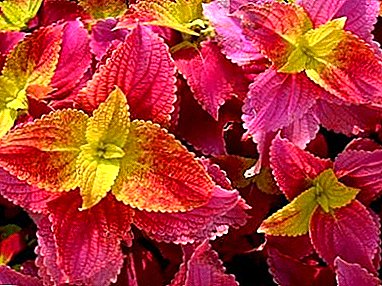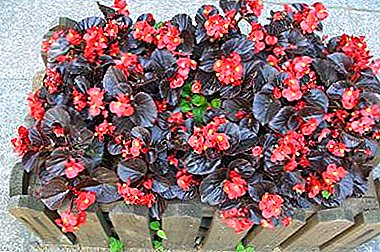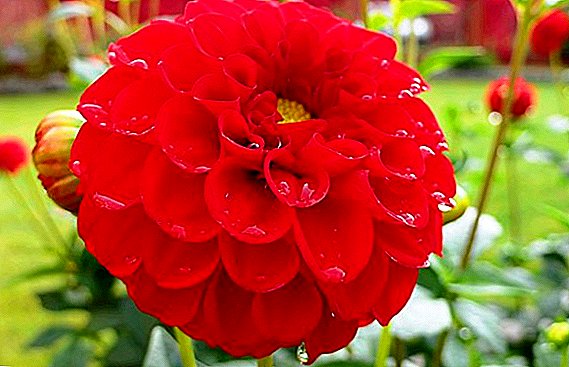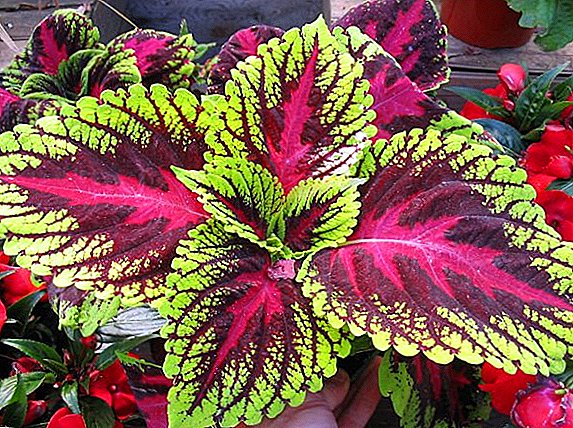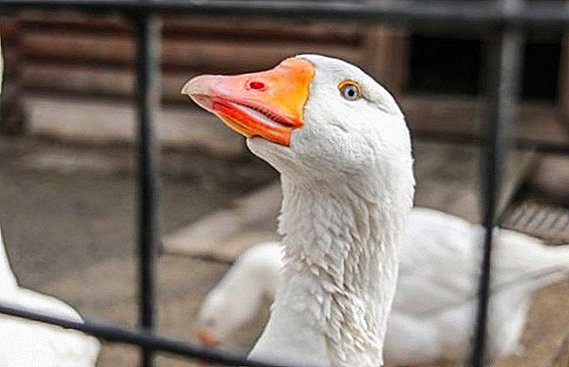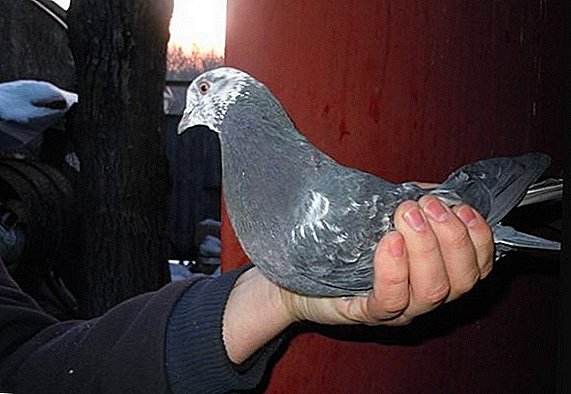 Pigeon breeding is a very common hobby on the territory of Ukraine, Russia, Azerbaijan and other CIS countries. One of the brightest representatives of winged pets became the Baku pigeons - after all, they have an incredible exterior, excellent flight qualities and relative unpretentiousness.
Pigeon breeding is a very common hobby on the territory of Ukraine, Russia, Azerbaijan and other CIS countries. One of the brightest representatives of winged pets became the Baku pigeons - after all, they have an incredible exterior, excellent flight qualities and relative unpretentiousness.
A bit of history
Baku pigeons, like most of the battle breeds, first appeared in the Stainless Achaemenids (aka Persia). They had peculiar feather "boots" on their paws and had more stamina than other birds.
The Baku breed has already acquired the modern look in the times of the USSR on the territory of Azerbaijan, because it was there that most of all connoisseurs of this breed were. And every pigeon breeder tried to get more and more interesting from the pigeon family. So the most playful and fighting pigeons turned out to be Baku.
Now this breed is actively sold in the Caucasus, Krasnodar and even in central Russia.  Baku birds are valued for their relative unpretentiousness, easy transition from one food to another, high stable immunity and, of course, for fighting qualities.
Baku birds are valued for their relative unpretentiousness, easy transition from one food to another, high stable immunity and, of course, for fighting qualities.
Find out what pigeons are called martial.
Appearance and physique
As a result of perennial crosses and attempts to “improve” the species and nature of birds to the maximum in the modern world, the Baku pigeon looks like this:
- Magnitude. On average, the bird has a size of 34-38 cm.
- Head. Oval-shaped with neat feathers, some species wear a "crest". The transition over the beak is smooth, the crown resembles a rectangle.
- Beak. Smooth, quite thin. It has a rounded end, the length is not more than 2.5 cm.
- Neck. Rather long, with a neat curve.
- Body. Has perfect proportions relative to the head, toned, rather muscular.
- Back. The shoulders are wide enough, narrowed to the tail.
- Wings. Fit tightly to the body, the ends lie close to each other, but do not form a "cross." The tail is parallel to the ground.
- Feathers. Smooth, adjacent to the body.
- Eyes. Have a characteristic shine.

Find out what features are typical for Turkish, Turkmen, Nikolaev, Uzbek pigeons, peacocks.
Flight style
During the flight, this breed of birds cannot be confused with any other pigeons, because in the air they show various figures characteristic only for them.
Unlike many other species of urban birds, Baku pigeons fly not in flocks, but loose, and each bird during the flight shows its individual “game”. Usually this species rises high enough in the sky, sometimes even becomes invisible to the naked eye, but with proper upbringing, these pigeons always find their way home, as they are very attached to the place.
Pigeon air stunts can be observed endlessly: the bird rises vertically high into the sky, then, throwing its head back, begins to tumble toward the ground, flapping its wings loudly, and so several times.
Bakuvians fly individually for the sake of their show, because synchronous falls will not look so fascinating.
Did you know? This breed of pigeons can be in the air for more than 12 hours in a row.

Varieties
Due to the fact that a considerable number of people and breeders were engaged in breeding this breed of pigeons, the result was a lot of color options for Baku bird representatives. The following types are not the only known, but they are one of the most common.
Find out what pigeons are like.
Agbash
Owners of this color can have a different body color, a business card - necessarily a white head, which can be both smooth and with a characteristic "tuft". 
It is interesting to know how many pigeons live in the wild.
Baku hryvnas
This species appeared in the early twentieth century. Brought him a lover of this breed Schmidt. The peculiarity of this species is that the body is a monochromatic white color, and the "tuft" on the head has a bright, highlighting color in the back. Front "chubchik" is also white. 
Learn how to keep pigeons.
Whites
This species differs exclusively white color, without any blotches. It is believed that this particular type has the best flight qualities. 
Learn how to contain ostriches, peacocks, partridges, quails, guinea fowls, pheasants, geese, ducks at home.
Bronze
Many breeders attribute this species to the most beautiful: the bird has a brass color, often with red or black splashes. 
Learn how to catch a partridge, pheasant with your own hands.
High-range
This pigeon has a predominantly white color (more rarely, with various inclusions). A characteristic feature is a reduced head and short beak. These birds love to soar high into the sky, much higher than other species. 
Marble
The name speaks for itself: the bird has a white coating with marble splashes of different colors. This color is transmitted exclusively through the maternal line, that is, if the female is marble, the chicks will be exactly the same as the mother. Very beautiful and unusual type of pigeons. 
Blacktails
In this species, as the name says, there is always a characteristic black tail. The body itself is mostly monochrome-white, and on the head is a neat "tuft." 
Many characteristics depend on the bird breed, learn about the breeds of peacocks, partridges, quails, pheasants, guinea fowls, wild and domestic geese, geese, ducks.
Chile
One of the most colorful representatives is chili pigeons. This species has a uniform coating, and cheeks, wings or tail are decorated with spots of red or black color.
What distinguishes this species is that they love long single flights, which are necessarily accompanied by an unexpected game in the sky. 
Necks
These winged ones have bright plumage, cherry eyes and a bright distinctive spot on the neck. Necks are extremely rare with a "tuft".
Broadtail
One of the most luxurious breeds. These birds have a light (white, beige) plumage and a powerful fan tail. Thanks to this “helm”, the bird spends more time in the sky than any other species.
Did you know? The rarest pigeon of this breed is the yellow one. Bring him out in Krasnodar. Usually yellow are called grivunas or necks, which have unusual yellow spots on the neck. This bird is more expensive than the others and is highly appreciated by the owners of pigeons.
Requirements for the room
Pigeon - a representative of the winged, who live long enough. The lifespan of some representatives passes for 30 years, and this is a third of the life of a long-lived person. However, the birds can set such a record only if they are properly maintained, because if you don’t provide your pet with a decent house, life expectancy can decrease by 2 or even 3 times.
Learn how to build a dovecote.
Dovecot sizes
The dimensions of dovecote are very important: birds should move freely in it and even make small flights from side to side, because the wings of birds should always be able to move. So, the size of the bird house should be:
- height - 150-200 cm;
- area - a dozen pigeons should be at least 15 square meters. m

Heat and ventilation
The pigeon room should be warm enough. The temperature should be 21-25 ° C in summer and about 5 ° C in winter. It is advisable to avoid sudden changes in temperature.
As in any dwelling for a living creature, in a bird house you cannot do without ventilation. The air for the birds must flow continuously, otherwise the pets may suffocate.
Nests and nests
It is desirable that each bird has an individual place - a perch on which the winged ones will spend their time and rest from the long flights. Baku breed needs smooth perches (wooden beams). If places are constructed in the form of shelves - they can be paired for 2 or 3 birds.
In addition to roosting, flyers necessarily need nests in which they will hatch their offspring. Nests are usually small square "boxes" without top, where the female can lay eggs and freely sit on them.
Important! In the nest there must be a natural litter (for example, from straw). Human access to nests also plays an important role, since birds cannot change the flooring themselves.Video: pigeon house device
Feeding trough, drinking bowl, kupalka
Feeding trough.
Breeders with years of experience strongly recommend making separate feeders for adults and young stock so that everyone is full and there are no conflicts and fights.
Familiarize yourself with the species of pigeons and their breeding rules.Requirements for proper feeding:
- natural materials from which it is made;
- direct access to food;
- protection against ingress of external objects into it (garbage, moisture, excrement);
- easy access for humans (for cleaning).
Video: the pros and cons of different feeders for pigeons Drinking bowl
The drinker can be purchased at a specialty store, or you can do it yourself using a large bottle with a bowl. However, it is important that the amount of water corresponds to the number of individuals. Birds should not suffer from thirst.
Important! In the cold season it must be remembered that the water tends to freeze, so you should think of heating for the drinker if it is outside.
Kupalka.
Bathing is necessary for feathered animals to maintain a good state of their feathers and overall health. This process allows birds to get rid of dead feathers, dust and insects, which can be got in the organic coating of pigeons.
As a cup you can use ordinary deep water containers, in which the pets will be happy to climb and wash themselves. You can also use large basins with special flooring (dry wormwood, ordinary fine sand, etc.).
In case a large amount of dirt or pests is detected in an individual, the breeder must independently bathe the bird in special medical devices or take a pigeon for bathing to a veterinary clinic (but not every veterinary hospital provides such a service).
Bathing doves: video
Litter and cleanliness
For ease of cleaning and more comfortable living pigeons in each dovecote, you must make the flooring, the height of which should be at least 50 mm. As the "carpet" you can use straw, sawdust, small wooden shavings and other harmless materials.
It is necessary to replace the litter, depending on the number of "beaks", because more individuals - more dirt. The minimum number of cleanings - once a week. And once a month it is necessary to carry out disinfection with the help of special gentle means that will be harmless for both pets and humans.
Lettok
In the manufacture of mounted pigeons in their design must necessarily include the entrance area - the "main corridor", in which the pigeon comes before you get into the "house". Usually it is a square about 15 × 15 cm in size, and 1 such a cage is calculated per pair of pigeons.
Since the hinged structures are usually designed for several pairs, then, accordingly, several corridors must be made so that the pigeons can freely enter and exit independently of each other. 
Feed and water
Food for the beloved feathered family must necessarily include such trace elements as proteins, fats, carbohydrates and various vitamins in order for the health and plumage of pigeons to be impeccable.
The main feeding element of birds is cereals - barley, millet, corn, rice, etc. But for birds alone, cereals will not be enough. In the diet should definitely include beans (peas, lentils), oilseeds (sunflower, rapeseed, flax), carrots. It is also worth adding berries, leaves and grass (lettuce, germinated grain).
Learn how to feed pigeons and chicks.Such a complex will be sufficiently rich in all the trace elements necessary for the birds, will allow pigeons to fully recover after long flights and save energy for new feats.
Often, breeders use fodder as feed, which is sold in specialized stores and contains all the necessary substances. 
Important! Feathered pets should have 2 meals: breakfast and dinner.
With water for pets, everything is simpler: it must be clean and must be changed frequently in order to avoid contamination and stagnation. Birds need regular fresh drinking.
Neighborhood with other pigeons
Many pigeon owners choose the Baku breed of birds as their pets. This is explained by the fact that this is a very beautiful pigeon, which has excellent flight qualities, and is also relatively unpretentious and fairly resistant to diseases.
Mostly pigeons live in families of the same breed, but if you want to have several different types of pigeons, it’s worth it from the very beginning. Birds from a young age can get used to each other. Also, as mentioned earlier, it is important to provide separate feeders for adults and young animals in order to avoid fights.
Learn all about pigeon diseases, is it safe to have a neighborhood with pigeons.

Training
Birds learn to fly, looking at their parents: adults fly and "play" in the sky, and young animals try to imitate them. In order for the chicks to learn how to fly and “play,” you need to regularly literally train their feathered wards. To do this, you need to have patience, because the bird will not get everything right away. For proper training there is a certain number of rules:
- Starting the first training is not earlier than the 40th day of the chick's life.
- At first, the chick will get poorly (laying down on the tail, etc.), but over time the bird will "fill the wing" and learn everything.
- The final combat style will be formed by the pet by 2 years, so it’s worth choosing proven, experienced individuals as parents.
- For 1 time it is worth releasing no more than 8 individuals of inexperienced young. When their style is close to synchronous, you can increase the number of "beaks".
- The most beautiful is considered the simultaneous fight of 15 individuals.
Did you know? In order for the young to become accustomed to returning home, breeders in Baku feed little birds before flight.How to train pigeons: video
Advantages and disadvantages
The main advantages of Baku pigeons are:
- relative simplicity in food, care and dovecot;
- good topographic memory (easy to find the way home);
- endurance, the ability to make long flights;
- excellent flight qualities (with proper training - amazing "game" in the sky);
- resistance to many dangerous diseases.
- genetic defects are possible (round body, neck does not have a bend, etc.);
- young animals without additional training do not immediately return home;
- for a beautiful "game" you need a long workout, without which the breed loses its zest;
- long-distance birds require large amounts of food rich in trace elements and vitamins.
 Baku pigeons are truly unusual birds: they fly higher and much longer than ordinary pigeons, and most importantly, they show incredible pirouettes in the sky, for which they can be safely called aces in their own way. They perfectly remember the way home and get used to their owner, and also perfectly oriented on the terrain. These birds have a huge number of colors and species, each of which has its own characteristic features. Planting a family of such pigeons, the owner can be sure that his pets will be the only and unique, with individual skills and characteristics.
Baku pigeons are truly unusual birds: they fly higher and much longer than ordinary pigeons, and most importantly, they show incredible pirouettes in the sky, for which they can be safely called aces in their own way. They perfectly remember the way home and get used to their owner, and also perfectly oriented on the terrain. These birds have a huge number of colors and species, each of which has its own characteristic features. Planting a family of such pigeons, the owner can be sure that his pets will be the only and unique, with individual skills and characteristics.Baku scout pigeons: reviews





